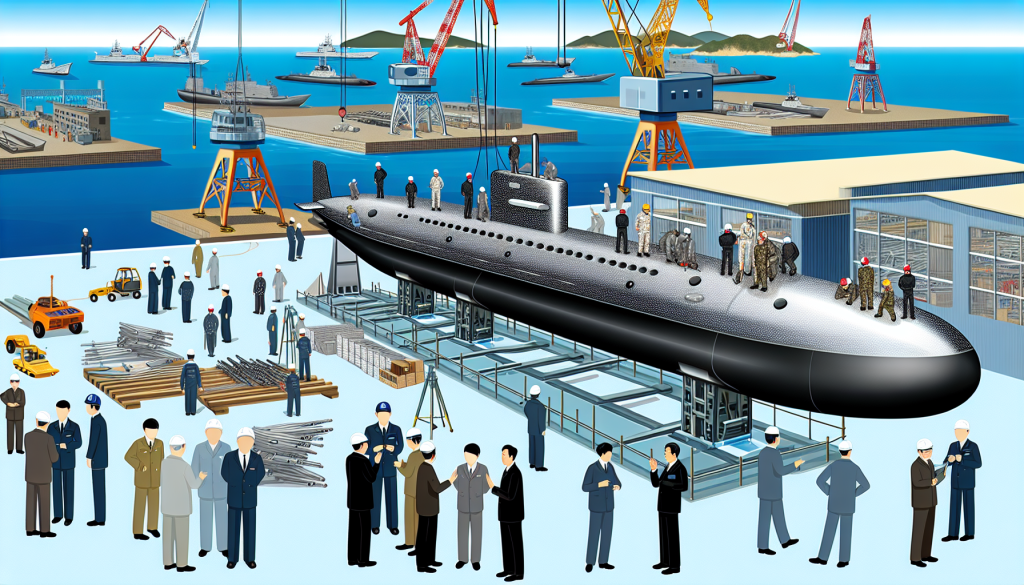Hanwha Oceans: A Strategic Bid for Canada’s Next Fleet of Submarines
Introduction to the Bid
In a significant move, Hanwha Oceans has emerged as one of the two finalists in the competition for constructing the Royal Canadian Navy’s future submarine fleet. The company is strategically positioning itself by emphasizing various industrial partnerships and potential economic benefits, aiming to secure this lucrative contract with the Canadian government.
Industrial Partnerships and Economic Benefits
Hanwha Oceans is not just offering submarines; it’s proposing a comprehensive industrial-technological benefit package. The company’s agenda includes potential investments in several key sectors, such as lithium-ion battery production, liquefied natural gas, aerospace, steel manufacturing, critical minerals mining, and sustainable energy solutions. Though specific details remain undisclosed, Hanwha assures that its proposals will yield substantial investments that could reshape Canada’s industrial landscape.
Broadening the Scope Beyond Submarines
Michael Coulter, CEO of Hanwha Global Defense, indicates that the company’s offerings extend beyond the submarines themselves. It is clear that Hanwha aims to meet the Canadian government’s broader requirements for enhanced industrial capacity. “We’ve talked about everything from energy co-operation to battery co-operation,” Coulter noted, highlighting the multifaceted nature of their proposal.
Friend-Shoring Initiative and Local Facilities
Pointing to successful initiatives, Hanwha has cited its recent establishment of an armored vehicle plant in Geelong, Australia, which employs around 1,000 workers. This serves as a model for their ambitions in Canada, with plans to construct two sustainment facilities for submarines on both coasts. Additionally, Hanwha envisions a manufacturing facility for producing tanks, rockets, howitzers, and resupply vehicles, emphasizing a long-term commitment to Canadian industrial development.
Lifecycle Support for Submarines
Coulter expressed Hanwha’s intention to manage the complete lifecycle of the submarines, from support to maintenance, within Canada. His vision is of a sustainable framework that keeps Canadian talent and resources engaged in the upkeep of these vessels for decades, thereby ensuring a robust domestic defense capacity.
Engagement with Canadian Officials
Hanwha recently hosted a Canadian delegation, including Stefanie Beck, the Deputy Minister of Defence, at its Geoje shipyard in South Korea. This visit served to showcase the KSS-III submarine model, which Hanwha believes is optimal for Canadian needs. Prime Minister Mark Carney is also set to visit the facility next month, underscoring the high level of interest and urgency surrounding the bid.
Commitment to Speed and Efficiency
With Canada’s Victoria Class submarines facing obsolescence in the coming decade, the urgency for new vessels is palpable. Hanwha asserts that if awarded the contract next year, it can utilize its massive shipyard capacity—spanning five square kilometers—to deliver the first of four KSS-III submarines by 2032, with additional vessels following annually. This plan could provide Canada with a full fleet of 12 submarines by 2043, significantly alleviating the nation’s defense concerns.
Cost Considerations and Financial Implications
Hanwha estimates that transitioning to new submarines could save Canada approximately $1 billion in repairs by retiring aging vessels earlier. The projected cost for these 12 submarines stands between $20 and $24 billion, excluding necessary infrastructure for servicing and maintaining the new fleet. Such financial considerations are crucial as the Canadian government seeks to balance budgetary constraints with national defense needs.
Moving Rapidly Through the Procurement Process
The Canadian government’s rapid movements regarding this procurement process are noteworthy. Despite the traditionally slow nature of such projects, it appears that Ottawa is keen on making swift decisions, possibly by the end of the year. Navy Commander Admiral Angus Topshee has hinted at this accelerated timeline, highlighting the urgency of the situation.
Conclusion
With an assertive pitch focused on economic growth, technological collaboration, and timely delivery, Hanwha Oceans is making a compelling case for its submarines as the best option for Canada’s future maritime defense strategy. The unfolding developments could set a new precedent for procurement processes in Canada, emphasizing efficiency and local industrial engagement.

